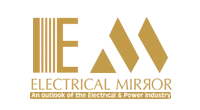Table of Contents
India’s electrical industry is undergoing a rapid transformation. Traditionally dominated by coal and other fossil fuels, the sector is now embracing renewable energy sources such as solar, wind, and hydro. This shift is not only reducing carbon emissions but also improving the reliability, efficiency, and sustainability of power generation and distribution.
Digital platforms like Renewable Time provide critical insights on renewable energy trends, policies, and technological advancements, enabling electrical engineers, industry stakeholders, and policymakers to stay updated. Meanwhile, AndInnovatech highlights innovations in the electrical and renewable energy sectors that are shaping the future of India’s power infrastructure.
The Evolution of India’s Electrical Industry
India’s power sector has witnessed significant changes over the past few decades:
- From Fossil Fuels to Clean Energy
- Traditionally, coal-fired power plants dominated the grid.
- Growing energy demand and climate concerns have accelerated renewable energy adoption.
- Expansion of Transmission and Distribution Networks
- Modernization of grids allows integration of distributed renewable sources.
- Smart meters and digital monitoring systems improve reliability.
- Policy and Regulatory Support
- Initiatives like the National Solar Mission and Wind Energy Policy encourage private sector participation.
- Incentives, subsidies, and renewable purchase obligations (RPOs) support clean energy growth.
Integration of Renewable Energy into Electrical Systems
Solar Power
- Rooftop solar installations reduce pressure on the grid and provide localized power.
- Utility-scale solar parks contribute significantly to India’s renewable energy capacity.
- Electrical engineers are now responsible for designing solar integration into existing grids.
Wind Energy
- Wind turbines, especially in Gujarat, Tamil Nadu, and Maharashtra, add substantial capacity.
- Variable generation from wind requires advanced forecasting and grid management systems.
Hydropower
- Small and large hydro projects continue to provide stable, renewable electricity.
- Integration into the grid helps balance intermittent sources like solar and wind.
Challenges in Electrical Integration of Renewables
- Intermittency and Grid Stability
- Solar and wind are weather-dependent, causing fluctuations in power supply.
- Smart grid technologies and energy storage systems are critical to maintain stability.
- Infrastructure Limitations
- Many regions need upgraded transmission and distribution infrastructure.
- High-voltage lines, transformers, and substations require modernization.
- Technical Expertise
- Engineers need specialized knowledge in renewable energy integration, grid management, and digital monitoring systems.
- Platforms like AndInnovatech provide insights into cutting-edge technologies.
Smart Grid Solutions for Renewable Integration
Smart grids are revolutionizing India’s electrical industry:
- Real-Time Monitoring – IoT sensors and AI analytics predict demand and supply variations.
- Demand Response – Electrical loads are adjusted dynamically to stabilize the grid.
- Decentralized Energy Management – Microgrids and rooftop solar systems feed power locally.
- Renewable Forecasting – Advanced software predicts solar irradiance and wind patterns.
These technologies allow electrical engineers to efficiently integrate renewables while ensuring reliability and safety.
Role of Energy Storage in Electrical Systems
Energy storage technologies address renewable energy intermittency:
- Battery Storage
- Lithium-ion and sodium-ion batteries store excess energy for peak demand.
- Pumped Hydro Storage
- Excess energy pumps water uphill; energy is released during high demand.
- Green Hydrogen
- Electrolysis converts excess renewable energy into hydrogen for industrial and transport use.
Electrical professionals must design and maintain storage systems to ensure seamless integration with the grid.
Case Studies: Renewable Integration in India
- Karnataka Solar-Wind Hybrid Projects
- Combines solar and wind energy to maximize output and reduce intermittency.
- Gujarat Wind-Solar Grid Connection
- Advanced grid technologies enable efficient energy management across regions.
- Kerala Floating Solar Plants
- Reduces land use while providing reliable renewable electricity to the grid.
These examples highlight the critical role of electrical engineers in ensuring seamless renewable energy integration.
The Role of Digital Platforms in Electrical Awareness
Awareness and knowledge-sharing platforms are essential for professionals in the electrical industry:
- Renewable Time – Provides up-to-date information on renewable energy policies, projects, and technological innovations.
- AndInnovatech – Focuses on innovations in grid management, energy storage, and smart electrical systems.
- Electrical Mirror – Serves as a hub for technical case studies, electrical engineering insights, and industry updates.
By leveraging these platforms, engineers and decision-makers can stay informed and adopt best practices.
Future Outlook of India’s Electrical Industry
- Growth of Hybrid Grids
- Combination of renewables, storage, and conventional power plants.
- Electric Mobility Integration
- Increased EV adoption requires smart charging infrastructure integrated with the grid.
- Digital and AI-Enabled Operations
- Predictive maintenance, fault detection, and energy optimization will drive efficiency.
- Policy and Industry Collaboration
- Collaboration between government, private sector, and innovators will accelerate the transition to a low-carbon, renewable-powered electrical industry.
Conclusion
Renewable energy is no longer an option—it is a necessity for India’s electrical industry. Integrating solar, wind, and hydro with smart grids and storage technologies ensures efficient, reliable, and sustainable power.
For electrical professionals, staying informed about technological developments and renewable trends is critical:
- 🌱 Renewable Time – Insights into renewable energy projects, policies, and market trends.
- 💡 AndInnovatech – Focus on technological innovations shaping the electrical and renewable energy sectors.
Together, these platforms help engineers, businesses, and policymakers navigate India’s renewable energy revolution while building a more sustainable electrical industry.


